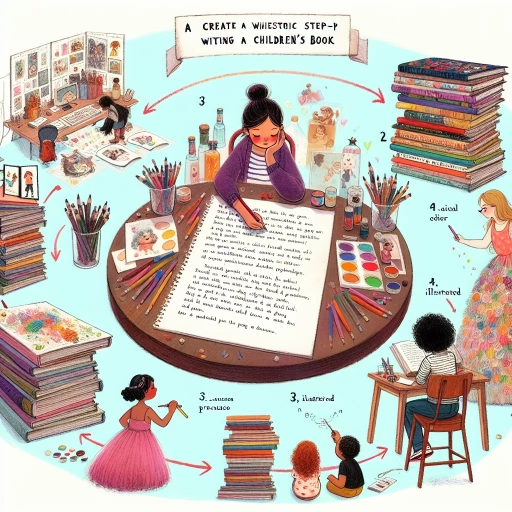How To Write A Children's Book

Understanding the Basics of Children's Literature
Distinct Characteristics of Children's Books
Children's literature is a unique genre that differs greatly from adult literature. The stories are usually simple, direct, and often centered around a moral or educational lesson. Here are the main characteristics of Children's books.
- They often contain vivid, colorful illustrations and pictures to help children visualize the story.
- The language is usually simple and the messages they convey are easy to understand.
- They also tend to feature relatable characters that children can identify with.
The Different Types of Children's Books
Different age groups require different types of books- such as board books for toddlers, picture books for pre-schoolers, and chapter books for older children. Knowing your targeted age group aids in crafting the book's content, length, and complexity accordingly.
- Picture books, for example, rely on the interplay of text and illustrations to tell a story, typically comprising around 500-1000 words.
- Chapter books, for middle grade children, have more complex storylines and characters, usually in the range of 10,000 to 50,000 words.
- Young Adult (YA) novels, in contrast, may contain mature themes and character interactions and can be as lengthy as adult fiction, often between 50,000 and 75,000 words.
Importance of Age-Appropriate Content
Children's books need to be age-appropriate both in terms of complexity of words and the metaphors used, and in terms of content and themes. The maturity of young readers varies, and it's crucial to create content that's engaging, understandable, and suitable for their age groups.
- Books for toddlers and pre-schoolers should focus on basic concepts, such as numbers, alphabets, animals, etc.
- Middle-grade books can delve into more intricate plots and issues, like friendships, school, family dynamics, etc.
- Young Adult literature can explore more complex themes like romance, identity, mental health, etc.
The Writing Process
Conceptualizing the Story Idea
Just like in any piece of literature, a great children's book starts with a compelling story idea. The best children's books often explore universal themes like kindness, courage, friendship, and love, that speak to the child's emotional development.
- A helpful starting point could be personal experiences or observations.
- Additionally, keep in mind the cultural contexts and inclusive representation in characters.
- Finally, a popular practice is to develop a character that children can relate to, or aspire towards.
Plot Development
Developing an engaging plot is crucial for a children's book. The plot structure for younger children should be straightforward with a clear beginning, middle, and end. For older children, you can incorporate more twists and turns.
- Ensure that the plot is relatable to children's experiences.
- The plot should ideally include a problem or challenge that the main character must face and resolve, thereby introducing the idea of conflict resolution to children.
- Heighten the suspense, build the climax gradually and ensure a satisfying resolution.
Creating Engaging Characters
Great characters are the key to a compelling children's book. They should be relatable, and their actions and decisions should drive the plot forward.
- Create strong, well-defined main characters with unique traits.
- Give the character a strength to admire and a weakness to overcome.
- For older readers, characters can exhibit more complex emotions and conflicts.
Publishing Considerations and Marketing Tips
Options for Publishing
Choosing the right publisher for your children's book is an important step. With the plethora of available options, you can decide to publish traditionally, self-publish, or choose the route of digital publishing.
- Traditional publishers carry prestige and often handle editing, illustration, and marketing processes.
- Self-publishing provides more control over the entire process and higher royalty rates, though all the expenses and marketing efforts must be borne by the author.
- Digital publishing might cater to contemporary readership trends and is cost-effective, but it may not be suitable for all types of children's books, particularly picture books.
Creating an Engaging Book Cover
The book cover often determines the first impression a potential reader will have of your book. It needs to be alluring, evocative, and relevant to the story.
- A great cover should be attractive, vibrant, and engaging, particularly for picture books catering to younger children.
- The title and cover should evoke curiosity and effectively hint at the book's theme or storyline.
- Finally, the book cover can also help position the book in the relevant age-category at first glance.
Marketing Your Book
Book promotion can be challenging but tracking the latest marketing trends, learning from successful authors, and creating a distinct brand as an author can be beneficial.
- Online platforms like social media, blogs, and author websites can play a crucial role in marketing the book.
- Children's book authors might also consider book readings at schools, libraries, or bookstores to engage directly with their core readership.
- Book reviews and testimonials can increase the book's credibility and visibility in the market.